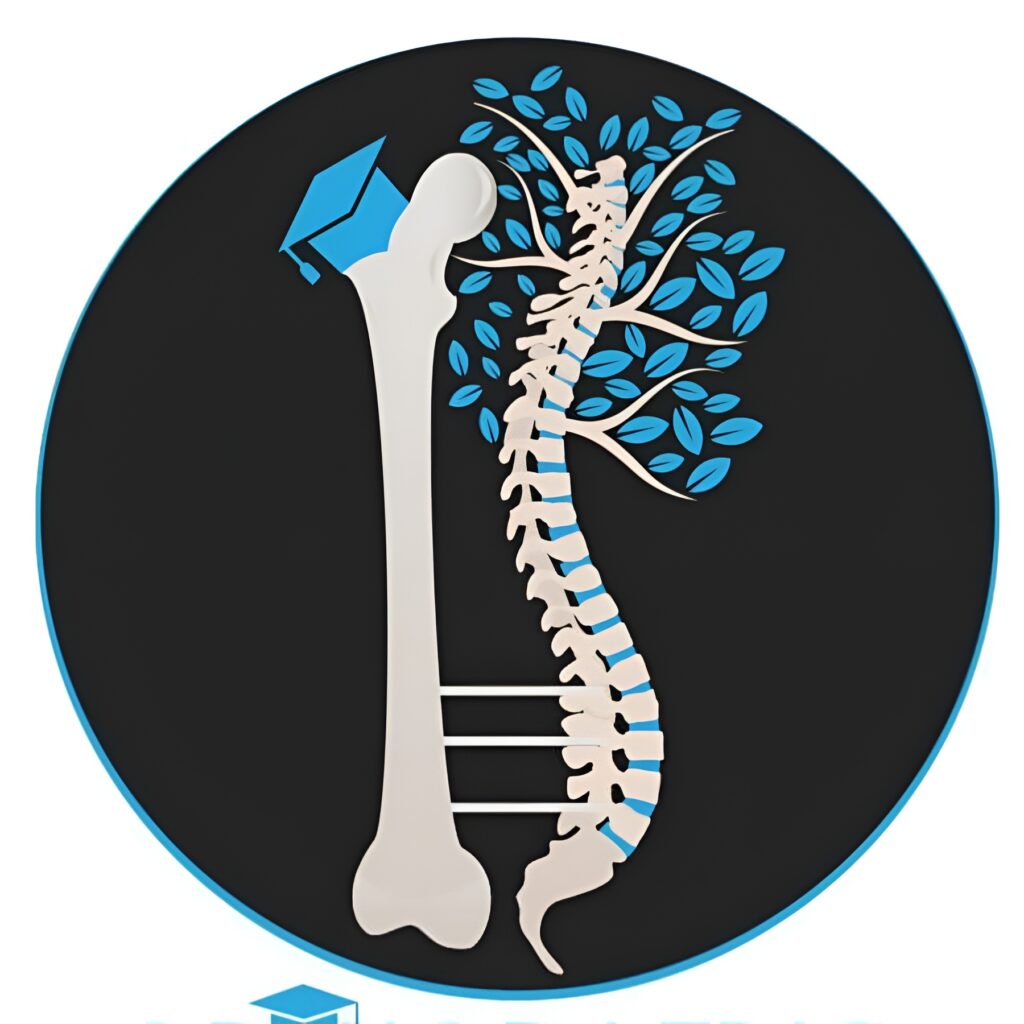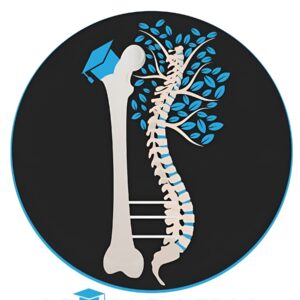
Arthroscopic Anatomy of the Shoulder | Orthopaedic Academy
- September 10, 2025
- 12:39 pm
Summary
The shoulder joint's complex anatomy includes the humerus, scapula, and clavicle, connected by three synovial joints. Stability arises from static structures—glenoid labrum, joint capsule, and glenohumeral ligaments (superior, middle, inferior)—and dynamic stabilizers, primarily the rotator cuff muscles. Vascular supply derives from the subclavian/axillary arteries; innervation comes from the suprascapular, axillary, and musculocutaneous nerves.
Raw Transcript
[00:00] anatomy of the shoulder as it pertains to arthroscopy. The shoulder is the most mobile joint in the human body, however with this amount of mobility, there is a sacrifice of stability. For the shoulder to remain stable, many anatomic factors come into play. Before understanding its biomechanics, it is important to understand the
[00:20] shoulder's complex anatomy. The osseous anatomy of the shoulder consists of the humerus, scapula, and clavicle. The bones of the shoulder joint complex are connected through three synovial joints.
[00:40] the glenohumeral joint, the acromioclavicular joint, and the sternoclavicular joint. The sternoclavicular joint is a plain synovial joint made up of two incongruent, saddle-shaped articular surfaces.
[01:00] These surfaces are the medial aspect of the clavicle and a notch created from the first costocartilage and the manubrium of the sternum. This joint serves as the only true attachment of the shoulder joint complex to the body's axial skeleton. The acromioclavicular joint is another important part of the body's body's body.
[01:20] articulation of the shoulder. The AC joint is made up of the distal articulating surface of the clavicle and the acromion process of the scapula. This joint is stabilized by three ligaments, the acromioclavicular ligament which adjoins the articulating surfaces of the distal
[01:40] clavicle and the acromion. The coracoclavicular ligaments, the trapezoid and conoid, anchor the distal aspect of the clavicle inferiorly to the coracoid process. The final and most intricate articulation of the shoulder joint complex is the glenohumeral joint.
[02:00] which is created by the articulation of the glenoid fossa of the scapula and the head of the humerus. This joint is described as a ball and socket joint, often likened to a golf ball sitting on a golf tee. This comparison is drawn due to the large nature of the humeral head in comparison to the glenoid fossa.
[02:20] the small, shallow, and concave surface of the glenoid. This mismatch in surface area contributes not only to extreme mobility of the joint, but also increased risk of instability. The glenohumeral joint therefore gets its stability from both dynamic and static factors. The glenoid labrum
[02:40] is a fibrocartilaginous ring that acts as one of the static restraints of the glenohumeral joint by deepening the glenoid fossa, increasing contact surface area, and contributing to the negative intraarticular pressure of the shoulder joint. Additionally, the labrum acts as an attachment site for other stabilizing structures.
[03:00] such as the long head of the biceps. It is attached to the glenoid through a fibrocartilaginous transition zone. Another static stabilizer is the fibrous membrane surrounding the glenohumeral joint, which contains the glenohumeral ligaments. This structure is referred to as the joint capsule and it can first
[03:20] substantial stability to the glenohumeral joint by limiting translation and rotation through the ligamentous structures contained within. In the mid-ranges of motion, such as normal everyday activities, the glenohumeral ligaments and joint capsule are in a lax state, therefore not contributing significantly to the joint stability.
[03:40] However, in the extremes of motion, the glenohumoral ligaments tighten according to specific arm position and control humoral head translation to provide stability. The superior glenohumoral ligament, identified in this arthroscopic image of a right shoulder, viewed anteriorly from a posterior portal,
[04:00] attaches medially at the supraglenoid tubercle and superior labrum, and laterally just superior to the lesser tuberosity of the humerus. Laterally, it makes up the biceps sling, or the medial pulley, which is comprised of the superior glenohumeral ligament and the coracohumeral
[04:20] ligament. The CHL acts as a superficial roof while the SGHL is the deep floor of the pulley. The SGHL works in conjunction with the CHL to limit superior translation and external rotation when the arm is adducted.
[04:40] Also contained within the capsule is the middle glenohumeral ligament, or MGHL. The MGHL crosses obliquely posterior to the subscapularis tendon, originating from the anterior superior surface of the labrum and glenoid neck medially. It inserts laterally onto the left.
[05:00] to the lesser tuberosity of the humerus. Shown here from an arthroscopic posterior viewing portal, the MGHL is situated posterior to the subscapularis tendon. Note the oblique orientation. The MGHL functions to limit both anterior and posterior translations
[05:20] the humoral head with the arm abducted and externally rotated. It also may serve as a secondary stabilizer to inferior translation in adduction. The inferior glenohumoral ligament, also referred to as the inferior glenohumoral ligament complex, is the most important
[05:40] important restraint of the glenohumeral joint with the arm externally rotated in both the neutral and abducted positions. The IGHL can be likened to a hammock, with the anterior and posterior bands at the front and back acting as ropes that hold up the hammock in between. This so-called hammock is also referred to as
[06:00] as the axillary pouch. The IgHL complex acts to limit inferior translation when the arm is abducted. When the arm is externally rotated, the anterior band shifts to cover the anterior aspect of the humoral head and limit anterior translation. When the arm is
[06:20] internally rotated, the posterior band shifts to cover the posterior aspect and limits posterior translation. In addition to the static constraints, the shoulder-joint complex also maintains stability through dynamic constraints provided by surrounding muscles, tendons, bursa, and recesses.
[06:40] The muscles contributing directly to glenohumeral joint stability are those of the rotator cuff. The four muscles moving from anterior to posterior are the subscapularis, supraspinatus, infraspinatus, and teres minor. Together, these four muscle tendon units
[07:00] act through force coupling to keep the humeral head centered within the glenoid fossa. As a brief overview, the subscapularis is defined as a large triangular muscle which originates on the subscapular fossa of the scapula and inserts on the lesser tuberosity of the humerus. The subscapularis is the most
[07:20] anterior rotator cuff muscle. Here you can see an intraarticular image of a right shoulder viewed through a standard posterior portal. The role tendon of the subscapularis can be identified going right to left across the image. Also worth noting in this image is the triangular space known as the
[07:40] rotator interval. This is the space between the subscapularis anteriorly and the supraspinatus superiorly. Within this space, surgeons often place anterior arthroscopic portals for interarticular access to the glenohumeral joint. Moving posterior superiorly, the supraspinatus
[08:00] is the most superior of the rotator cuff muscles and originates in the supraspinous fossa of the scapula. From the posterior view, you can also see the other two rotator cuff muscles, the infraspinatus and teres minor. From this posterior view of the scapula, the infraspinous fossas
[08:20] identified, which is the origin site of both the infraspinatus and the teres minor. More specifically, the origin of the infraspinatus is on the surface of the infraspinus fossa and the spine of the scapula. While the teres minor originates in the posterior aspect of the superior half.
[08:40] of the lateral border of the scapula. The supraspinatus, infraspinatus, and teres minor all insert on the greater tuberosity of the humerus. The supraspinatus and infraspinatus can be seen in these arthroscopic images, both viewed through a posterior portal into the inter-arterial axis.
[09:00] particular space of the right shoulder. On the top right, you can see the humeral head and just posterior to the biceps tendon, the insertion of the supraspinatus tendon onto the greater tuberosity. The image on the bottom right is with the camera telescoped back to give a more posterior view of the humeral attachment of the rotator cuff tendon.
[09:20] tendons. Here you can see both the supraspinatus and infraspinatus tendon attachments. Also shown here is a normal anatomic variant of the humoral head called the bare area. This is an anatomic indicator of the transition between the supraspinatus tendon and the infraspinatus tendon.
[09:40] This arthroscopic image is in the subacromial space of a right shoulder, viewing from a lateral portal. This image provides a clear view of the scapular spine, located centrally and separating the suprasmanatus muscle anteriorly and the infrasmanatus muscle posteriorly.
[10:00] As a brief overview of the vascular supply pertaining to the shoulder joint complex, arterial supply begins through the aortic arch and into the brachiocephalic trunk. Then continues through the subclavian artery, then the axillary artery, and further distally into the brachiocephalic trunk.
[10:20] brachial artery. The venous return traveling near the shoulder joint complex consists of the brachial veins, bacilic vein, and cephalic vein, which terminate into the axillary vein, continuing proximally
[10:40] through the subclavian vein, then the brachiocephalic vein before returning to the heart via the superior vena cava. Nerves that are pertinent to shoulder arthroscopy are the suprascapular nerve, which arises from the brachial plexus and is primarily responsible
[11:00] for the innervation of the supraspinatus and infraspinatus muscles of the rotator cuff. The axillary nerve, which also originates from the brachial plexus, lies just posterior to the axillary artery and anterior to the subscapularis. This nerve is responsible for innervating three muscle
[11:20] muscles of the arm, the deltoid, the long head of the triceps, and the teres minor of the rotator cuff. The musculocutaneous nerve arises from the lateral cord of the brachial plexus and courses anteriorly and distally penetrates the corcobrachialis muscle. It provides motor function
[11:40] to the muscles in the anterior compartment of the arm, the coracobrachialis, the biceps brachii, and the brachialis. In this catavaric video, we again have the right shoulder of a patient in an upright beach chair position. Viewing from the posterior portal, the glenoid is on the left and the humoral head on the left.
[12:00] the right. Advancing the camera anteriorly, the long head of the biceps comes into view, as well as the anterior labrum and superior glenohumeral ligament medially. As we begin to drive the camera inferiorly, the entire inferior labrum comes into view as the humeral head is distracted away from the right.
[12:20] the glenoid. The posterior labrum also comes into view. Additionally, the glenoid bear spot is visualized here. This is a normal variant indicating the central articulating surface for the humoral head. Bringing the view
[12:40] back anterior, the rotator interval and role tendon of the subscapularis are visualized. The long head of the biceps is then seen as it projects into the joint from the bicipital groove laterally. In this view, you can also appreciate the superior glenohumeral ligament as it attaches to the humerus on the under surface of the biceps.
[13:00] biceps into the groove. And finally, as the camera is driven inferiorly, the axillary pouch containing the inferior glenohumeral ligament complex comes into view, from its medial attachment on the glenoid through to the lateral attachment on the humerus.

